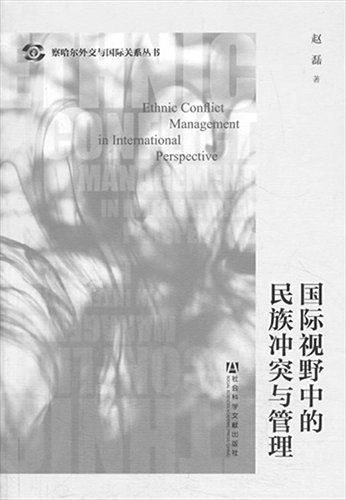HOME >> OP-ED
International perspective on ethnic problems brings new approaches
Source:Global Times Published: 2013-11-7 19:53:01

Zhao Lei, Ethnic Conflict Management in International Perspective, Social Sciences Academic Press (China), September, 2013
After the end of the Cold War, domestic confrontations instead of international conflicts have gaining momentum in global community. Disputes among different ethnic groups are one of the major causes that disturb world peace.
As a country with 56 ethnic groups, China is not immune from ethnic conflicts.
In fact, ethnic issues are increasingly making headlines these years. The most recent one was the terrorist attack in Tiananmen Square at the end of October, in which the suspects are all Uyghur. The incident has also raised concerns about whether it will increase existing prejudices against ethnic minorities.
For a long time, Chinese academia has put much of its emphasis on the governance of ethnic minorities instead of the management of ethnic groups as a whole.
Some ethnic policies, though beneficial to the development of the whole nation, have produced a few side effects that seem to breed misunderstandings.
Ethnic Conflict Management in International Perspective, authored by Zhao Lei, associate research fellow at the Institute of International Strategic Studies, Party School of the Central Committee of CPC, offers a perspective drawn from international relations, as the name of the book indicates, to the study of ethnic conflicts.
The book attempts to introduce the theory of ethnic conflict management into China's problems. It also divides two spectrums of ethnic conflict management into internal management and external management.
When analyzing external management, the book introduces ideas about how to predict and deal with the international intervention into China's domestic ethnic issues.
Beside the well-organized structure, systematic analysis and selected cases, the most interesting part of this book is its vision of "solutions" to the "ethnic problems."
By comparing the management approaches of the West and China, the book holds that ethnic relations need to be "culturalized" instead of "politicized." China's domestic ethnic problems should be confined as contradiction between "mainstream cultural groups" and "sub-cultural groups."
Currently communication among different ethnic groups is still lacking. When thinking of an ethnic group, people primarily define it by where they live, or which administrative area they belong to. Ethnic minorities should be culturally distinctive, not politically indistinctive, social groups.
The book suggests that distinctions between different ethnic groups should be reduced gradually, and the core of the efforts is to stop "segmenting different ethnic groups."
"The equality of different ethnic groups," the book says, "should improve to become the equality of individuals of all ethnic groups."
The book has some curious ideas as to how to translate the Chinese word minzu, rendered in the past as "nationality" by domestic translators drawing upon German and Russian translations of Marxist texts. The text seems to be under the misconception that this is still the normal translation.
The author suggests that the unity of all 56 ethnic groups as a whole should be called the "Chinese nation." He puts forward the slightly bizarre solution of using the pinyin word minzu in English, rather than the already common solution of substituting "ethnic group" or similar depending on context.
By integrating the international community with the domestic situation, this book offers a new perspective on China's vision of the future of its ethnic minorities.
Posted in: Fresh off the Shelf, Viewpoint